Colwick (Holme Sluices) Fish Pass Information Page
Overview
February 2024
Jackson Civil Engineering are working on behalf of the Environment Agency. Construction of the fish pass will help to create a healthy watercourse, allowing migratory fish to access spawning grounds upstream, provide better wildlife habitats, and improve the biodiversity of the area”. When the gate is closed there is still a residual flow through the eel chute, as eels will travel against the direction of flow and tolerate very low water levels, this feature ensures that when the gate is closed no eels will become trapped inside the pass, and will be able to exit along the ramp.
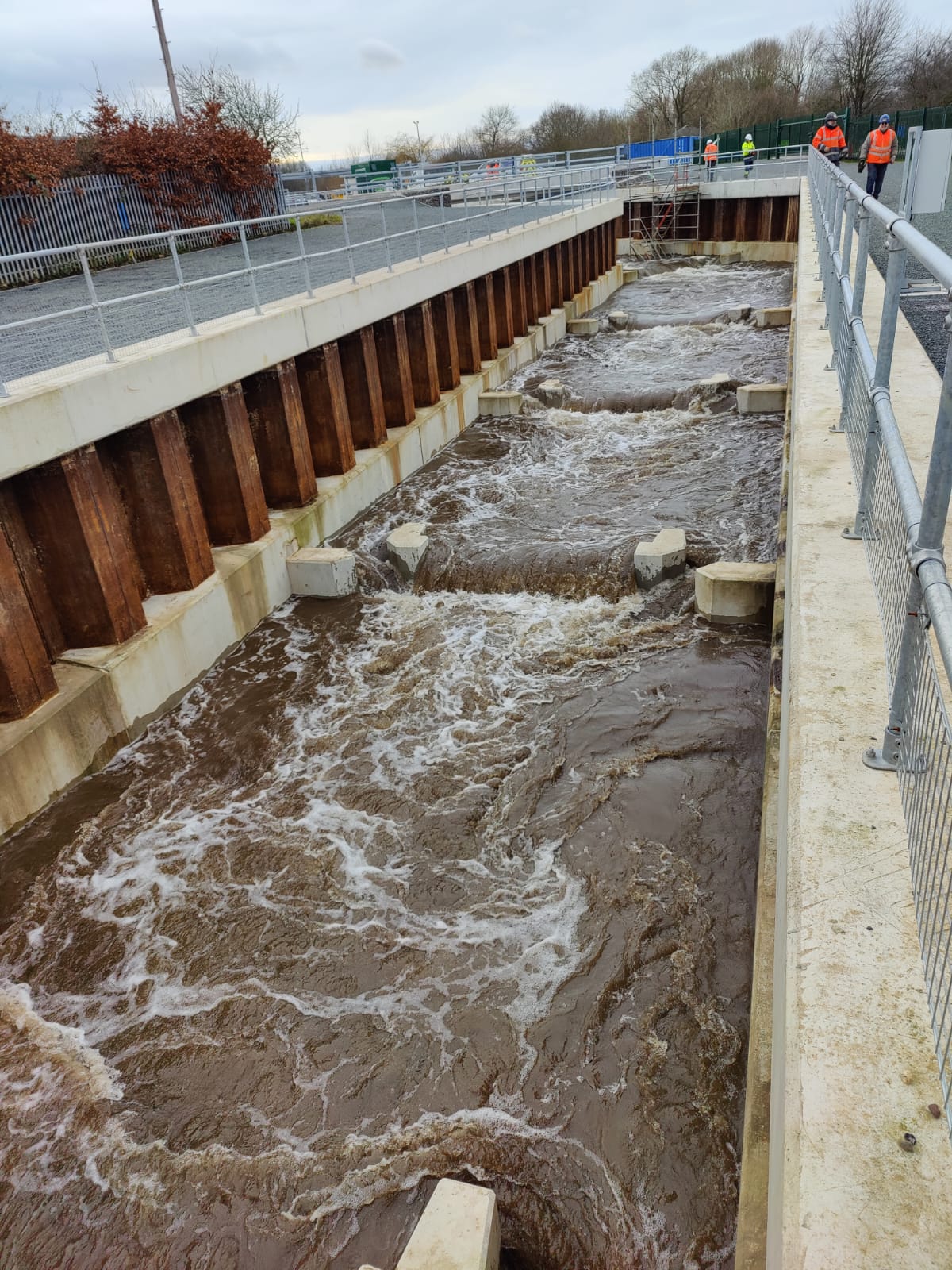
Source: Jackson Civil Engineering
Despite multiple delays from the unusually high number of storms resulting in extensive flooding this season, full commissioning was carried out at the beginning of this month. Following activation of the radial gate, the first flows entered the pass, bringing the structure up to operational levels in a startling 90 seconds. There will now be a period of testing and training for the operatives who will operate the pass going forward, ready to hand over to Environment Agency control in the Spring. Usage of the pass will depend on adequate water levels in the River Trent, meaning that there may be periods when the pass must close to maintain navigable levels in the main channel.
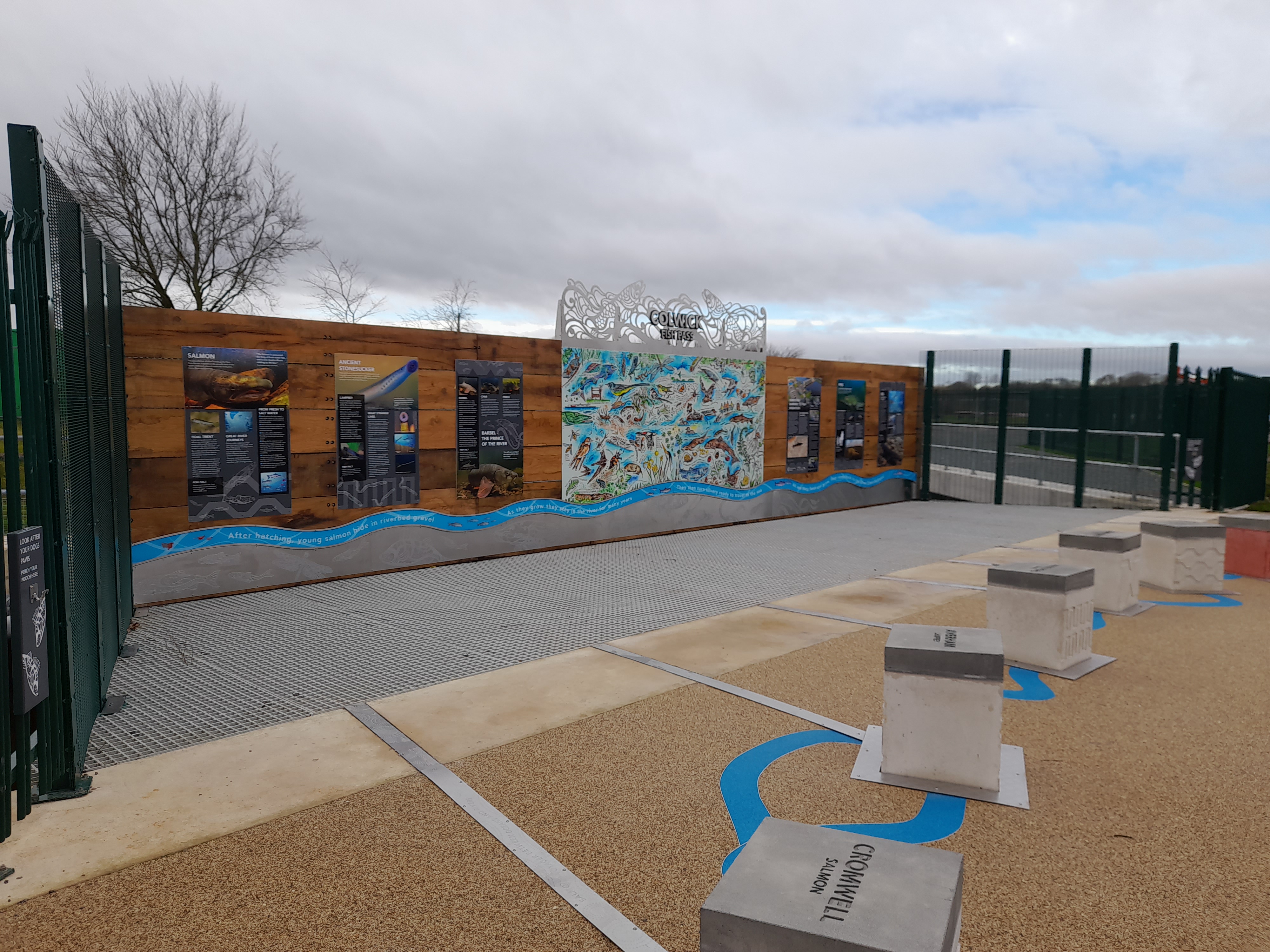
Source: Jackson Civil Engineering
The public viewing platform is almost complete, with most of the signage installed. The viewing platform features detailed information boards on the likely species of fish and aquatic life which may frequent the pass, along with bespoke artwork from environmental artist Steve Pardue illustrating the wider ecosystem associated with the River Trent.
The blue resin visualises the path of the River Trent, with nine cast concrete blocks spread along the route. These provide seating for visitors, and also represent the locations of each of the large weirs that present barriers to fish migration without the work of the Trent Gateway project. The block indicating Colwick Sluices is coloured red to provide context to the current location. The mesh flooring and side panels are designed to allow visitors to see the channel, and hopefully spot any aquatic visitors. There are a few more items to install, once completed the platform will be open to the public.
October 2023
 Source: Jackson Civil Engineering
Source: Jackson Civil Engineering
The fish pass is now over 90% complete, with all major works finished. Minor works remain to fit a final supporting beam to the radial gate, after which the pass can be opened to allow full commissioning.
Landscaping and civilisation works are almost complete, with the final tarmac layer laid on the park road at the end of September. Most of the fencing has also been installed, and is expected to be completed by the end of October. Surfacing works on the maintenance strip around the fish pass are finished, along with the seeding of all grass verges now starting to grow through.
The gantry system for removal of the stop logs has been installed, and all instrumentation connected. This will allow the stop logs, modular blocks which are dropped into grooves to create a water tight barrier, to be lifted out or dropped into place to allow inspection and maintenance of the pass. The commissioning and testing period of the pass is anticipated to start in November with final testing to follow, subject to the necessary river levels.
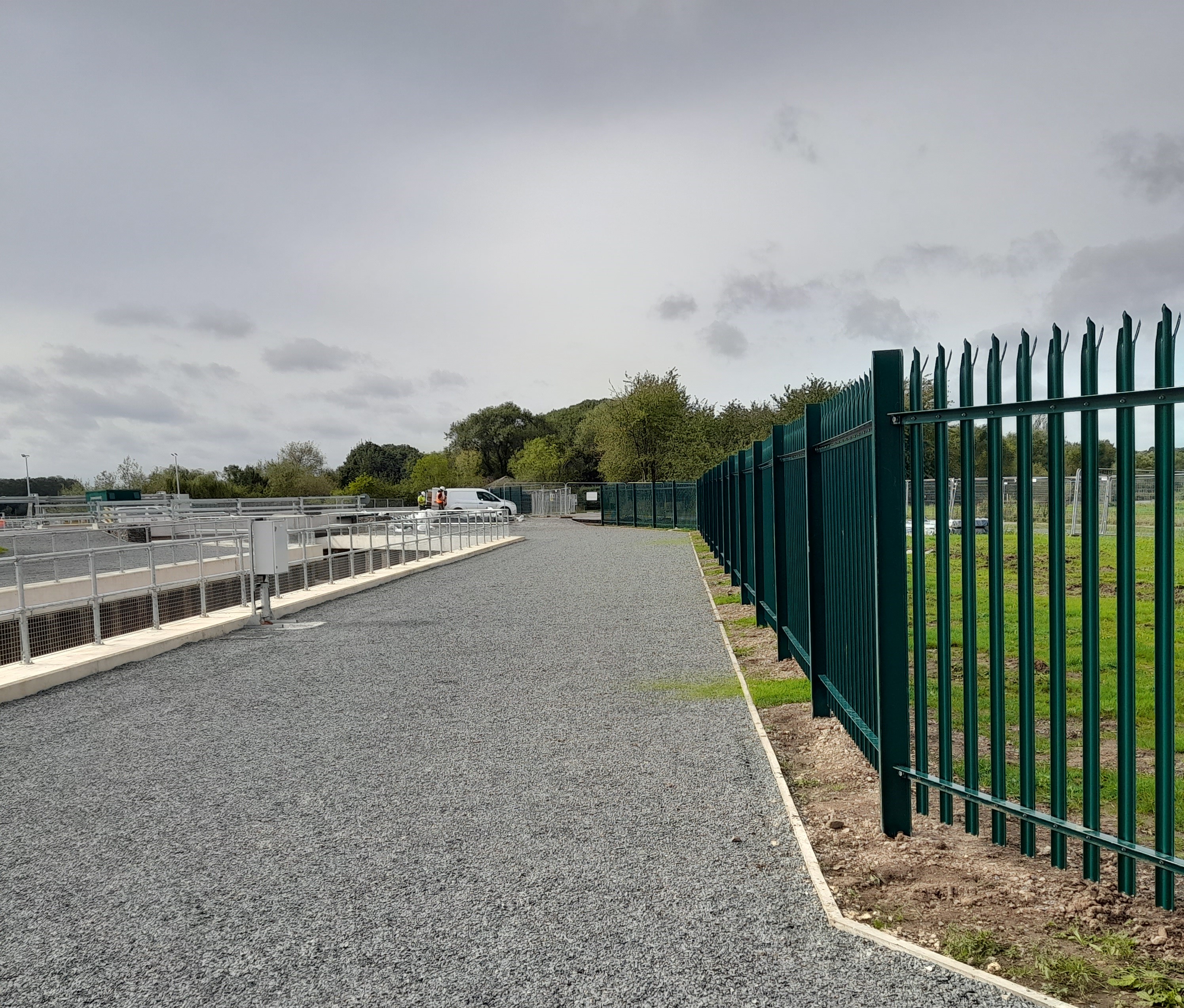 Source: Jackson Civil Engineering
Source: Jackson Civil Engineering
Preparation of the public viewing platform continues. This features an open mesh floor, which will provide visitors with a chance to look directly down into the pass and hopefully spot some of the aquatic visitors. Information boards are being prepared, which will be mounted on the wooden back wall once the pass is fully open.
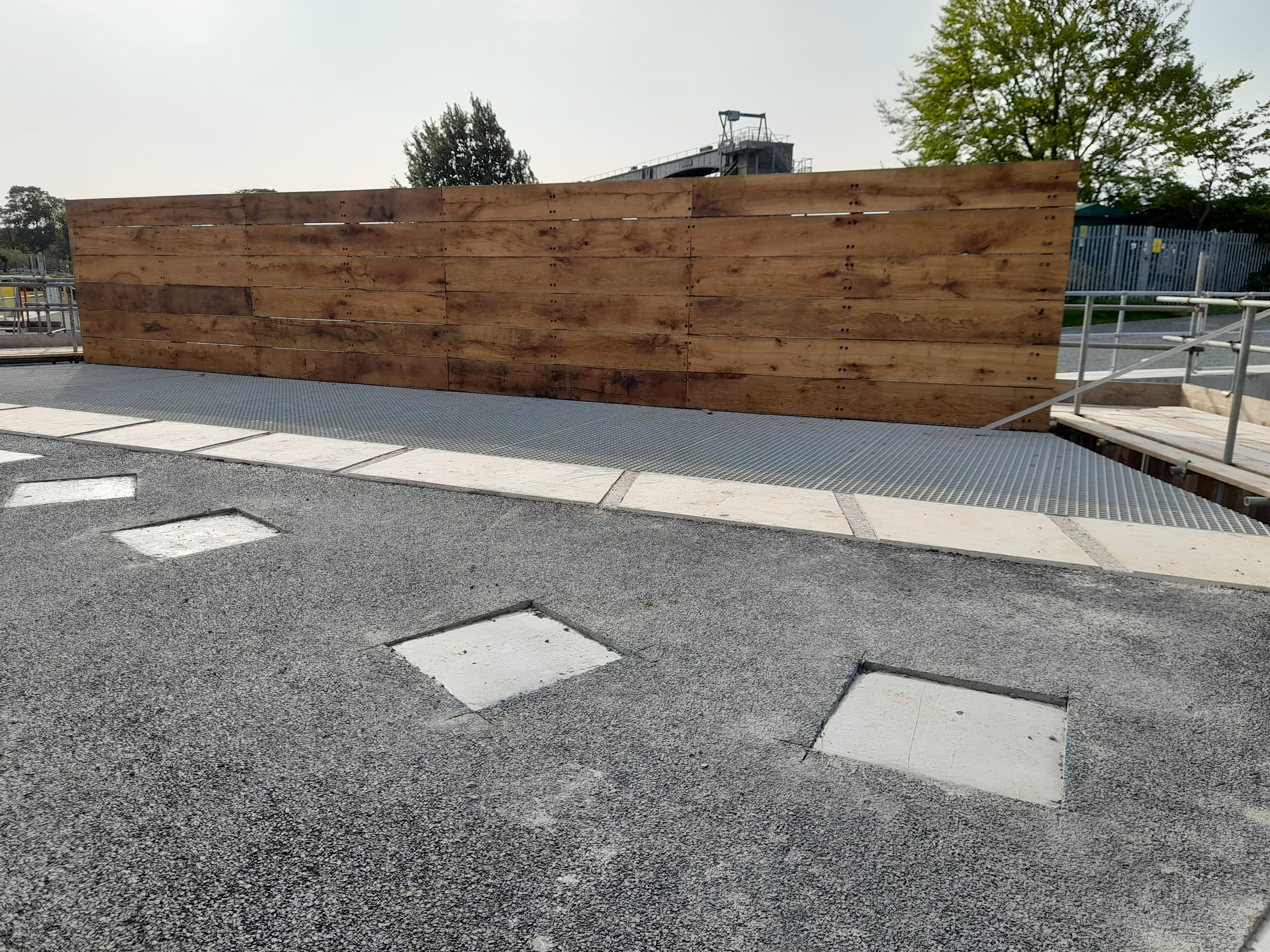 Source: Jackson Civil Engineering
Source: Jackson Civil Engineering
February 2023
Steel fixing and concrete pours continue on the base slab, side walls and baffles (you can see two in the centre of the fish pass at the start of the inlet).
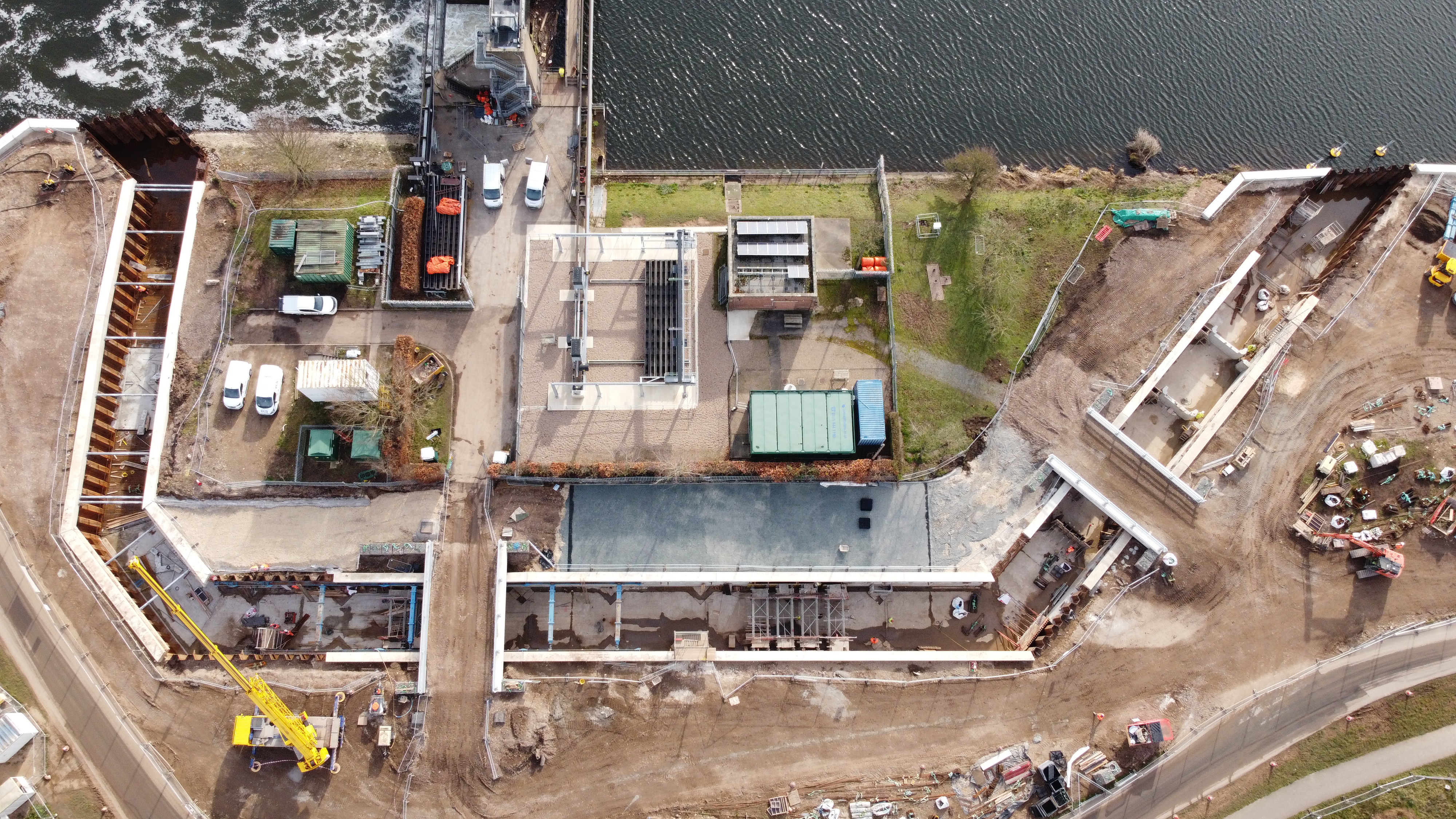 Source: Jackson Civil Engineering
Source: Jackson Civil Engineering
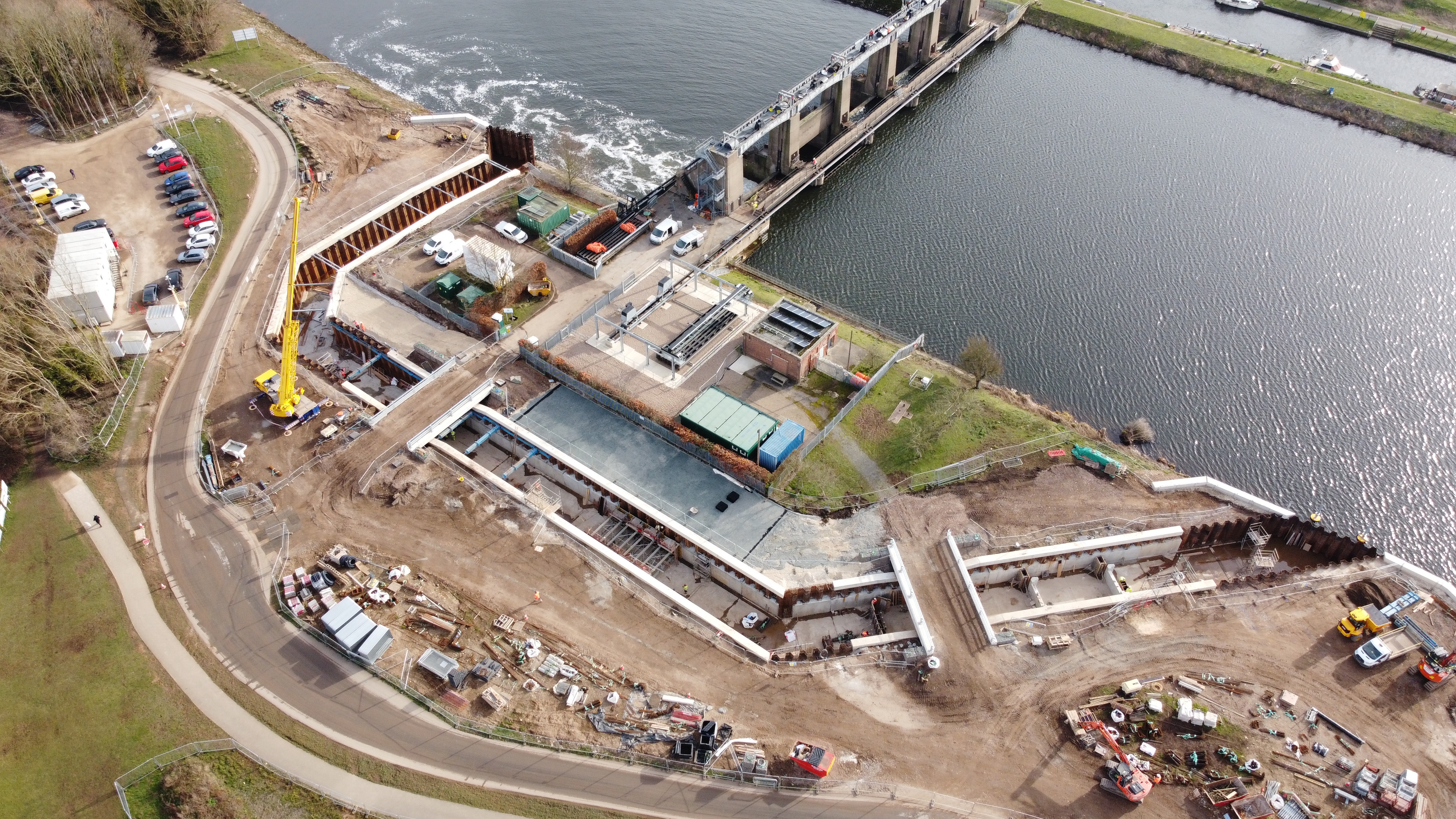 Source: Jackson Civil Engineering
Source: Jackson Civil Engineering
September 2022
We have completed all the sheet piling works and are now excavating the areas for the fish pass and continuing the concrete capping beam works.
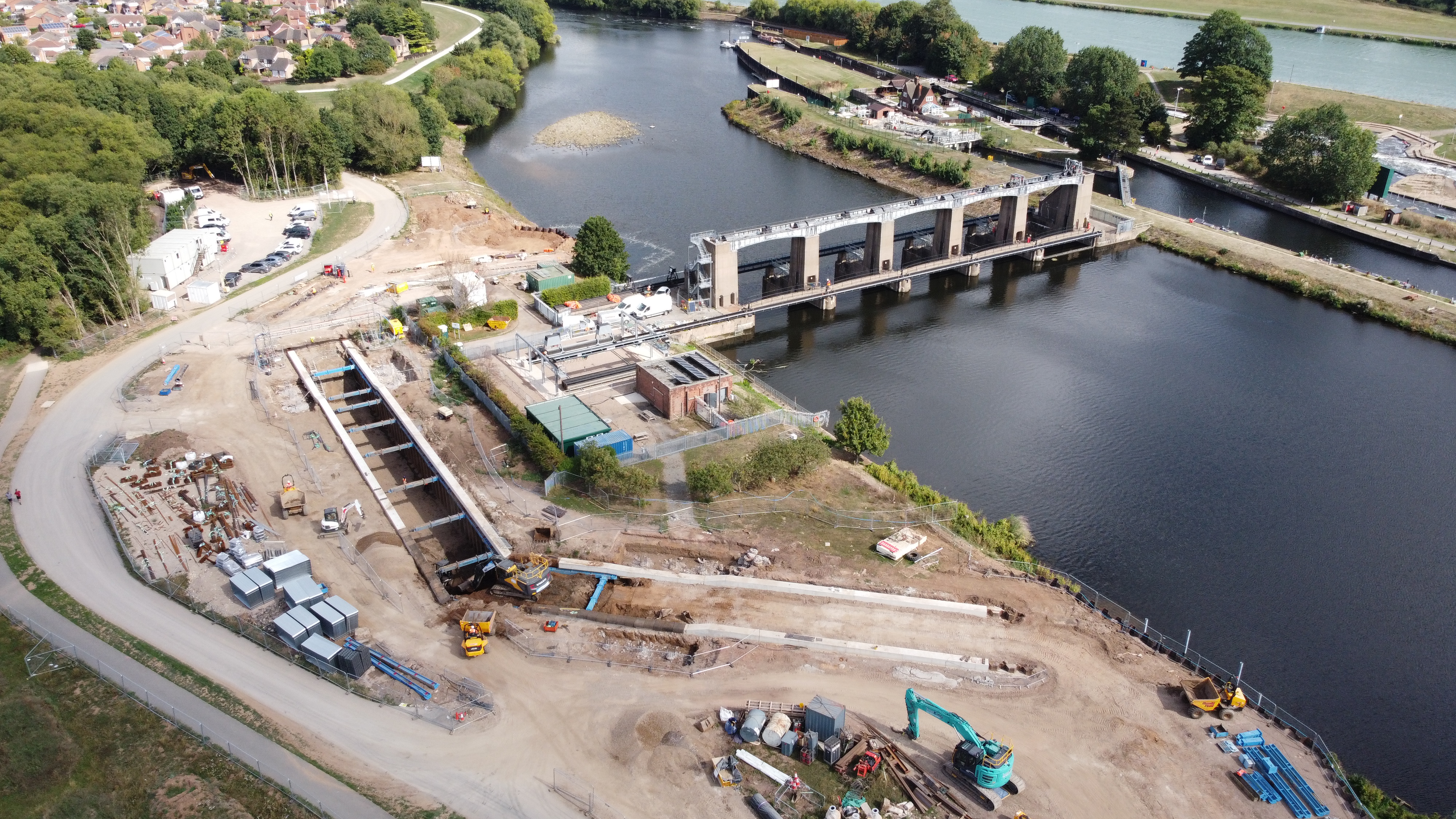 Source: Jackson Civil Engineering
Source: Jackson Civil Engineering
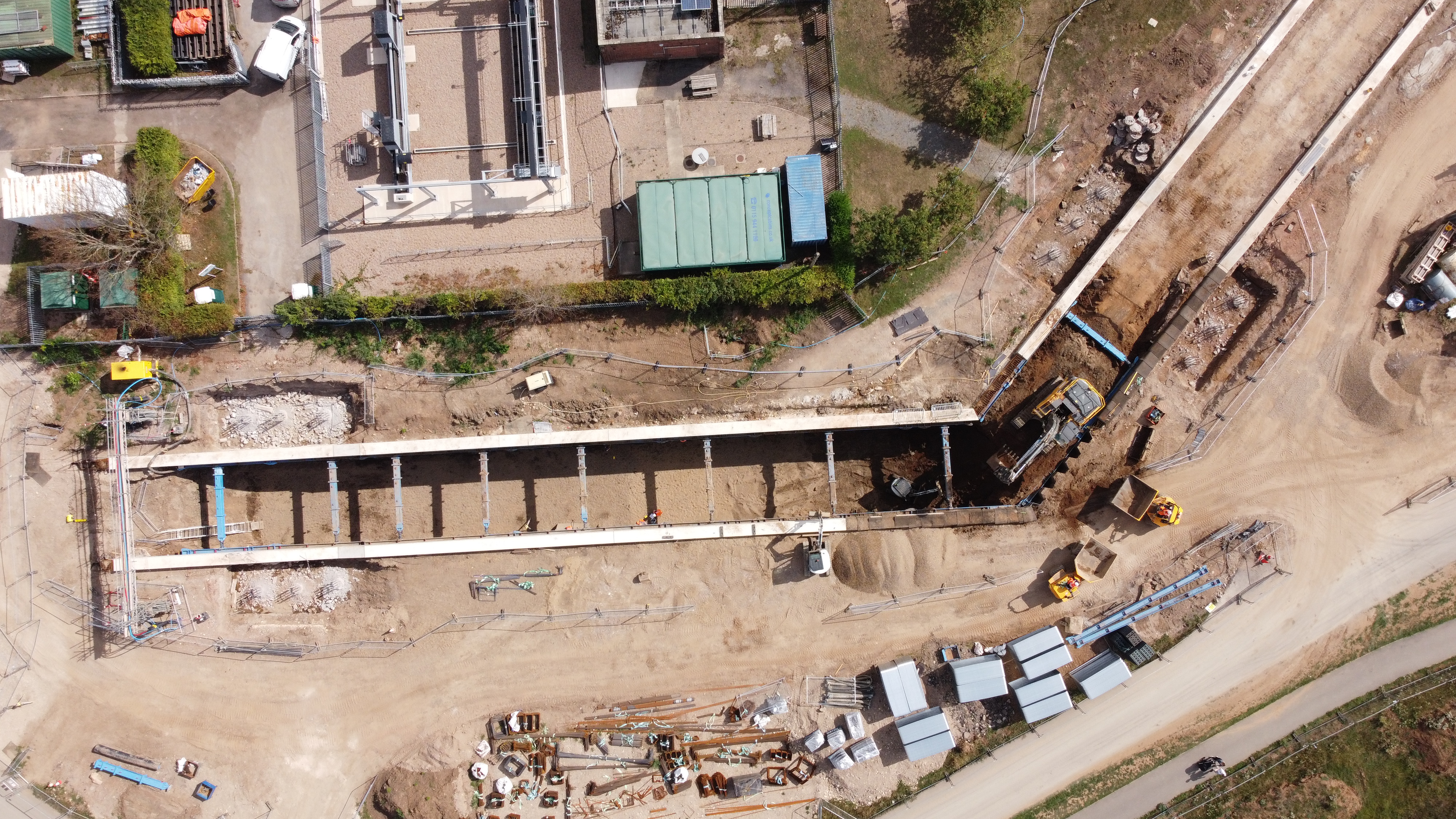
Source: Jackson Civil Engineering
June 2022
The north and west walls of the fish pass have been sheet piled, concrete works have started on the north section and concrete piles for the first bridge have been installed. Dredging works have been completed at the inlet of the fish pass. The bubbles in the water are from the bubble curtain installed to reduce debris spreading in the river.
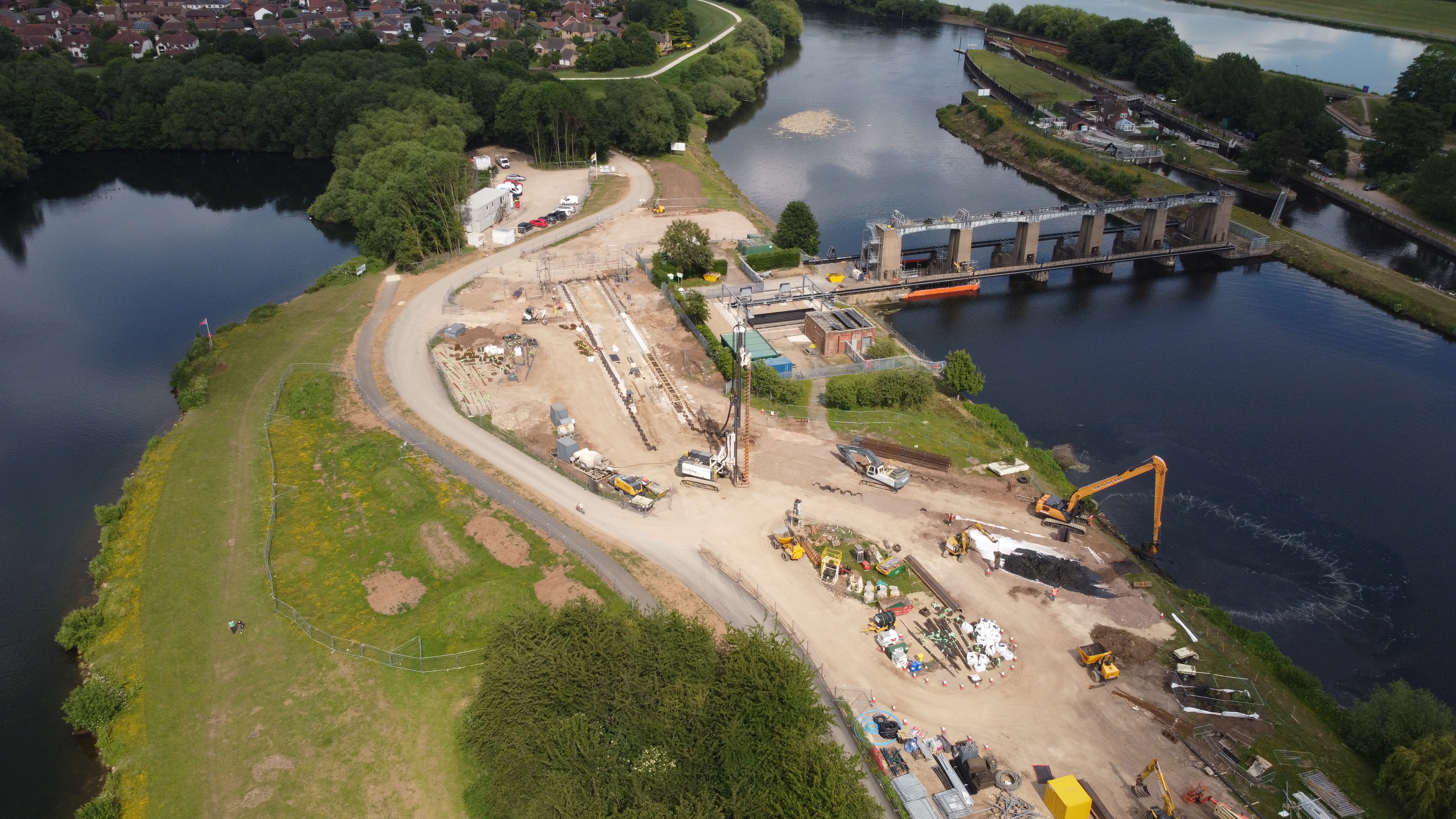 Source: Jackson Civil Engineering
Source: Jackson Civil Engineering
Children from St John the Baptist Primary School in Colwick have designed banners to show how important the River Trent is for wildlife and why we need healthy rivers. They have now been displayed near the site to help inform people about the project.
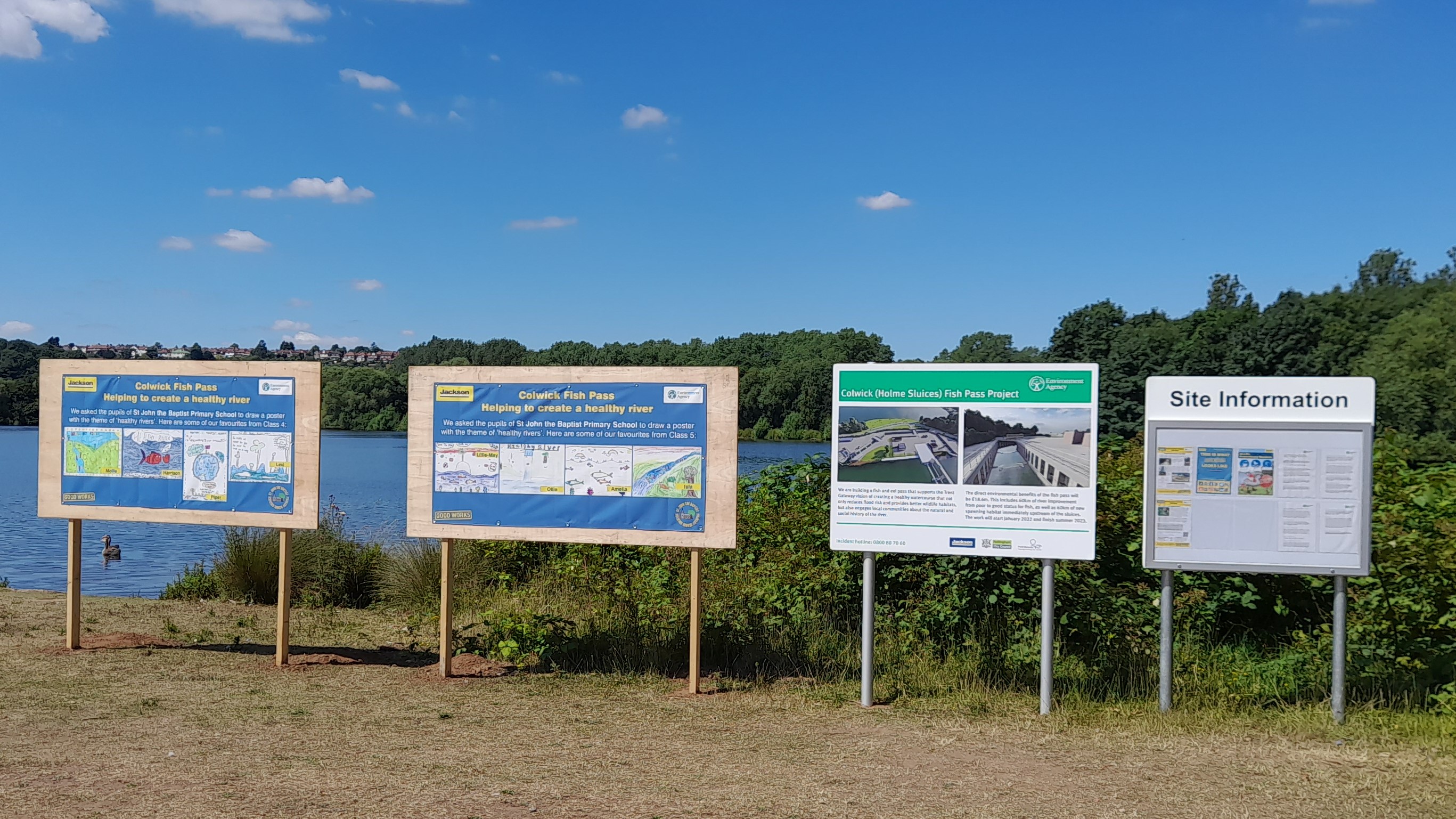 Source: Jackson Civil Engineering
Source: Jackson Civil Engineering
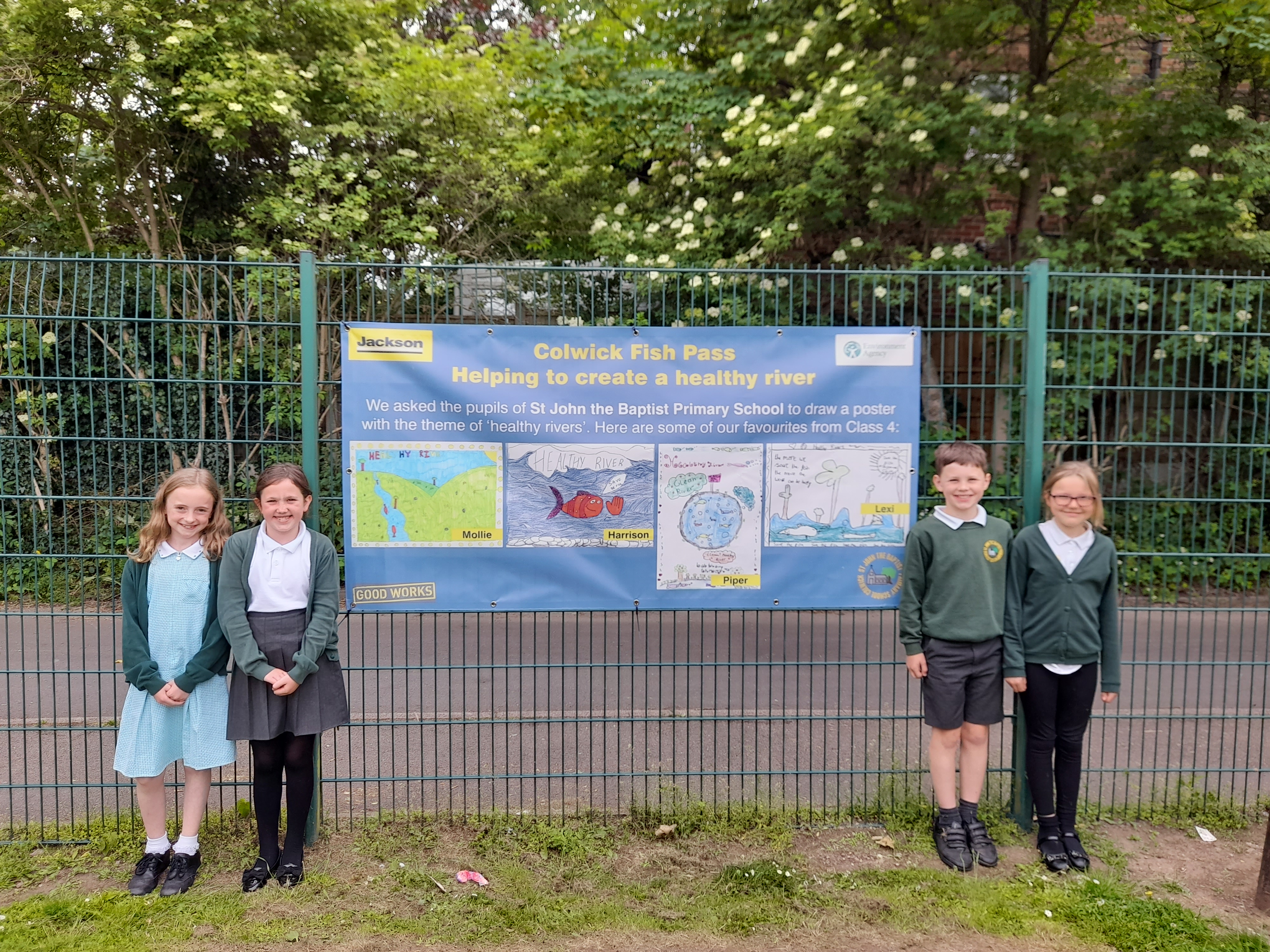 Source - Jackson Civil Engineering and St John the Baptist Primary School
Source - Jackson Civil Engineering and St John the Baptist Primary School
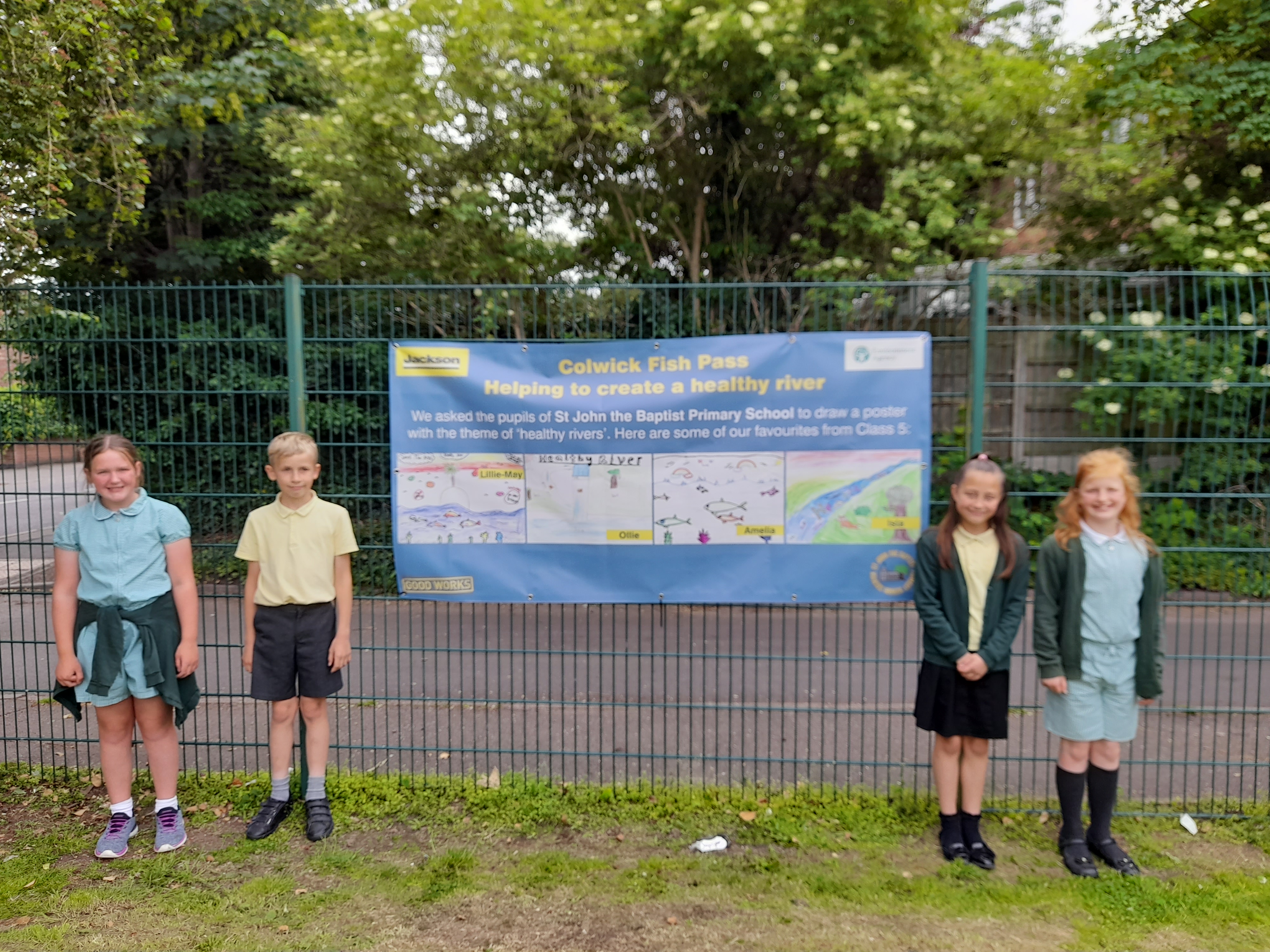 Source - Jackson Civil Engineering and St John the Baptist Primary School
Source - Jackson Civil Engineering and St John the Baptist Primary School
May 2022
|
Over the last few months we have been diverting the road and services, and clearing the site ready for the sheet piling to begin. |
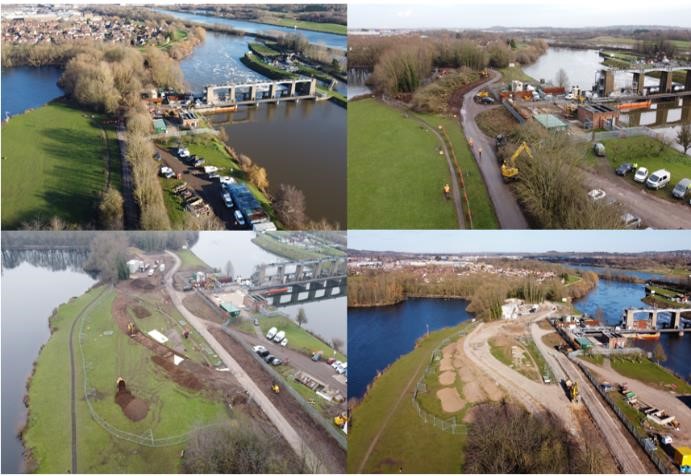 Source: Jackson Civil Engineering
Source: Jackson Civil Engineering
A new bridge has also been installed at the entrance to Colwick Country Park to enable the heavy cranes and piling rigs to access the fish pass site.
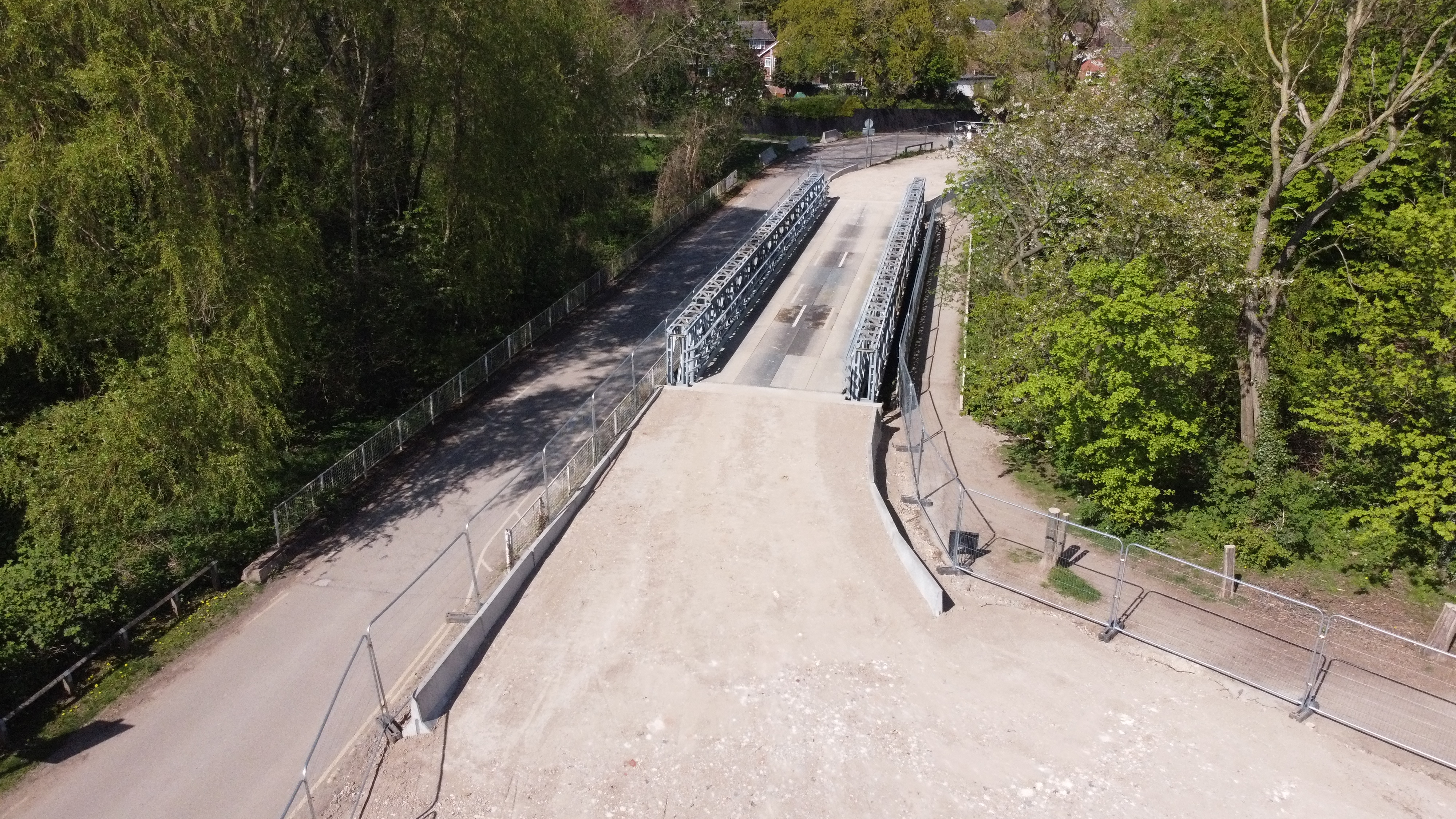 Source: Jackson Civil Engineering
Source: Jackson Civil Engineering
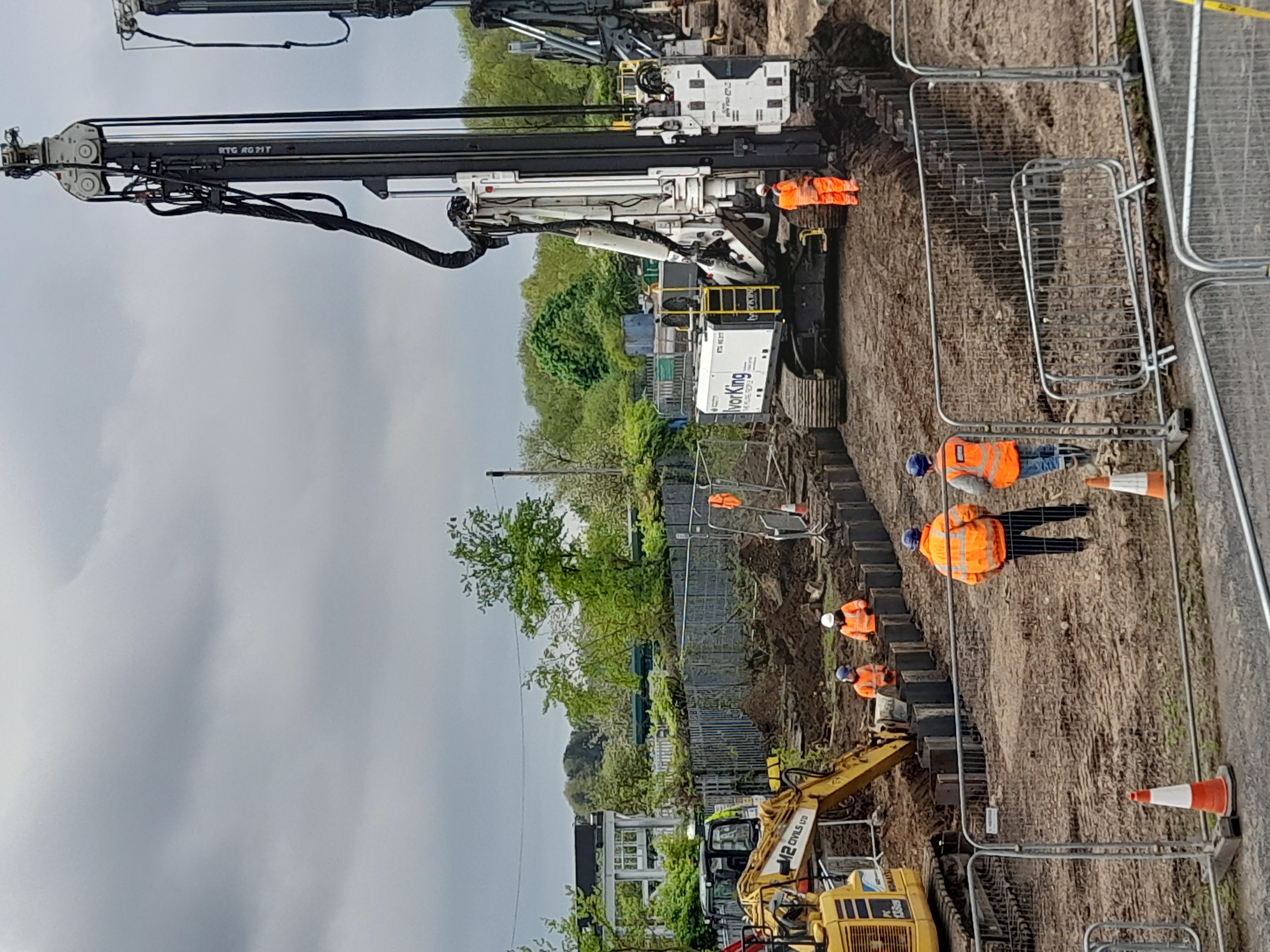 Source: Jackson Civil Engineering
Source: Jackson Civil Engineering
January 2022 - Ground breaking event
On the 28 January, a ground-breaking event was held to celebrate the start of construction of the fish pass. The Environment Agency Area Director, Louise Cresswell was joined by Tom Randall MP along with the Lord Mayor of Nottingham, Cllr David Trimble, David Kent (Trent Joint Anglers Council) and representatives from Nottingham City Council.

Source: Environment Agency
January 2022 - Tree clearance
We have carried out some vegetation and tree clearance to enable the re-routing of River Road away from the new fish pass area. Careful planning and consultation with qualified ecologists and tree specialists have identified the minimum area needed to be removed to minimise disruption. We are also using this area for our site compound.
Nothing was wasted, all the timber removed from the site was recycled. The wood reused to create eco habitats around the park and the Adventure Centre will recycle the wood within the centre. On completion of the works, we have committed to planting 5 trees for every 1 removed during the project, further improving the area for wildlife and people.
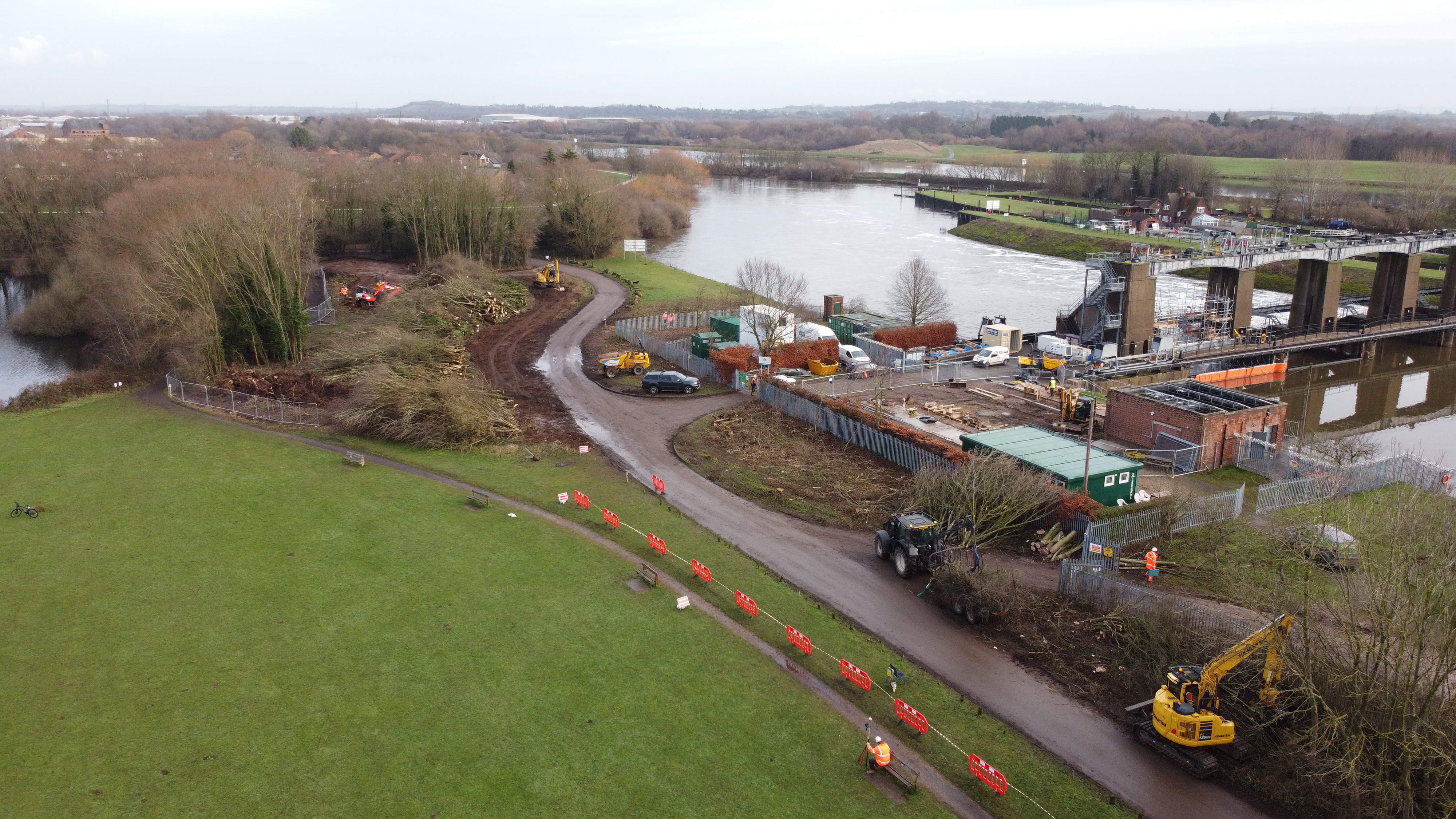
Source: Jackson Civil Engineering
October 2021 - Public drop-in event
We held a public drop-in event on the 5 October to share our plans for what will be the largest fish pass in the country.
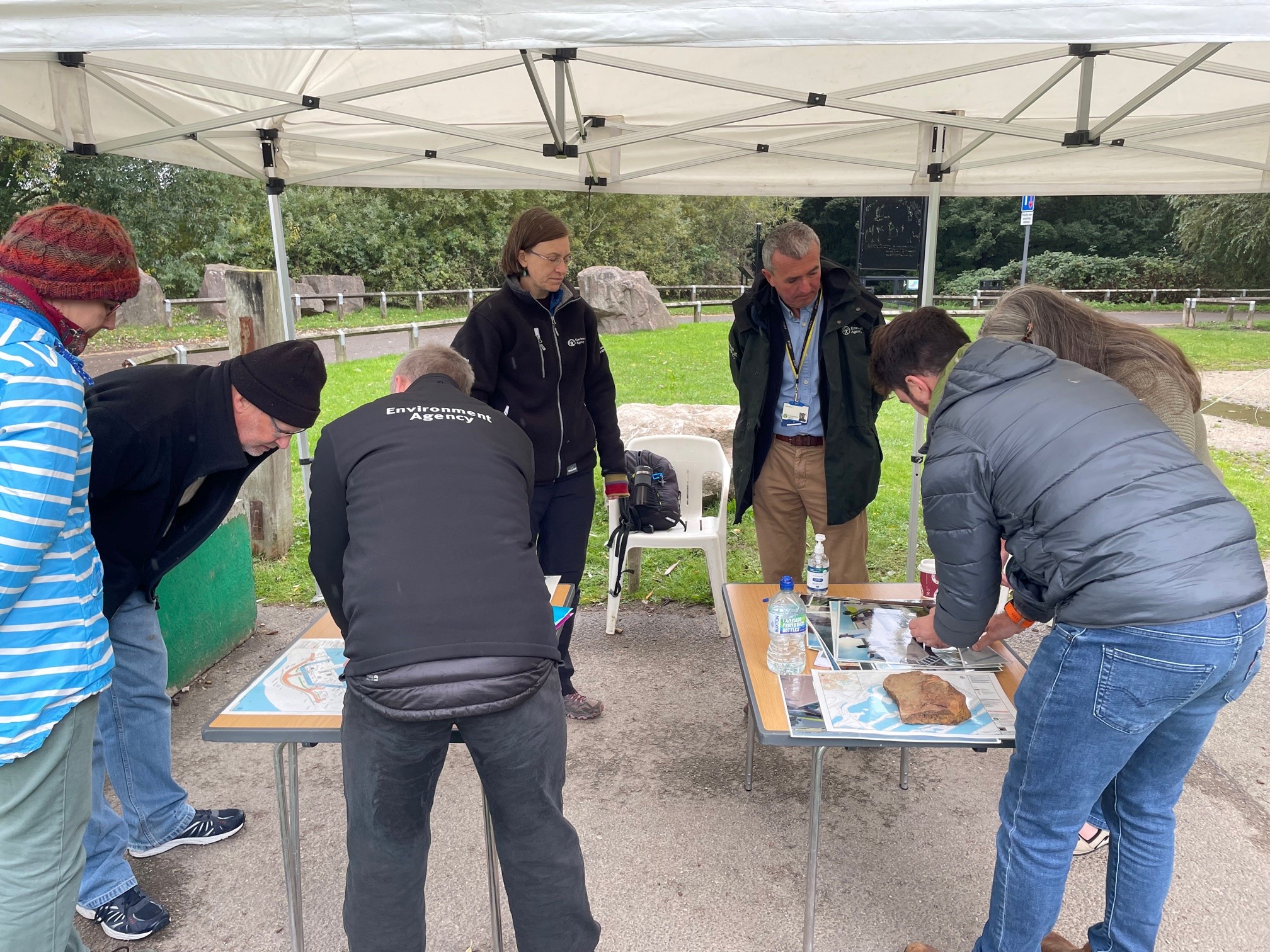
Source: Jackson Civil Engineering
Background
Holme Sluices spans the full width of the River Trent to the south of Nottingham and was built in the 1950s as part of a large scale flood defence scheme. It is a major Environment Agency operational structure that helps to protect Nottingham from flooding and controls river levels upstream. It is the largest barrier to the natural migration of fish in the Midlands. Alongside over 30 local partner organisations we have been developing an ambitious project to restore the River Trent and reconnect communities and wildlife within it – the third longest river in the country. As part of the Lower Trent & Erewash Catchment Partnership, the Trent Gateway project aims to create a healthy watercourse that not only reduces flood risk and provides better wildlife habitats but also engages local communities about the natural and social history of the river. The Holme Sluices fish pass is the first major project that will help towards the delivery of the Trent Gateway vision.
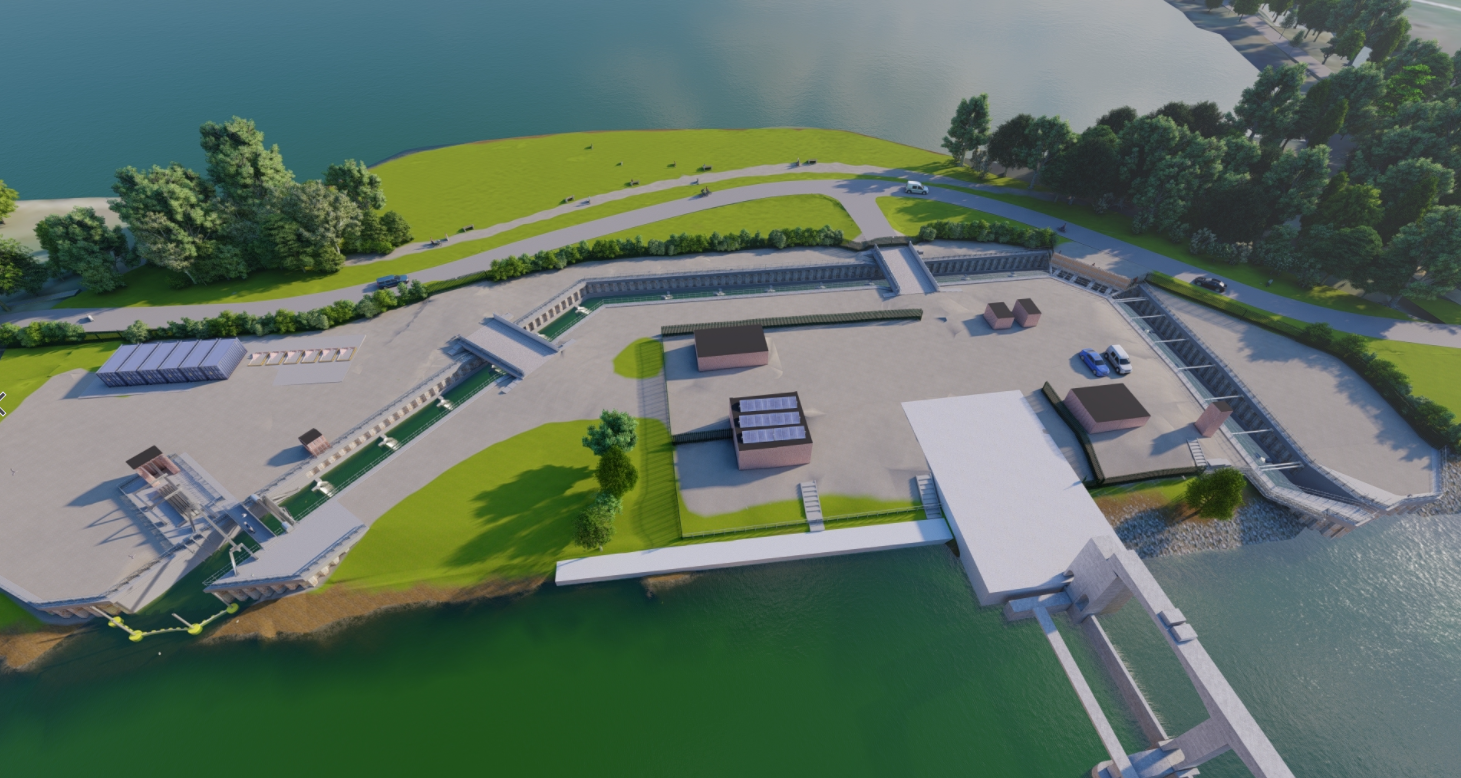
Source: Environment Agency/Royal Haskoning
Who are we working with?
We have worked with a number of partners on the design. In 2013 we assessed all of the options to enable fish to pass around the sluices and the preferred option has been developed with our designers and contractors over the last 5 years. We are also liaising with Nottingham City Council as they develop plans to create an educational and interpretation hub at Colwick Country Park that will become a centre for visitors to learn about the River Trent and its amazing history. Trent Rivers Trust are hosts of the Lower Trent & Erewash Catchment Partnership and are leading on the development of projects to further enhance the river and deliver the ambition of Trent Gateway. The Environment Agency will be leading the fish pass project.
Why are we doing it?
In total there are eight large weirs along the lower River Trent from Cromwell near Newark to Sawley near Long Eaton without a fish pass. These barriers affect the natural migration of fish as they try to reach spawning habitat upstream into the Midlands. Holme Sluices is the largest barrier and is owned and maintained by the Environment Agency. We are addressing our barrier first and through Trent Gateway we are seeking a partnership approach to further open up access to spawning grounds in the rivers Derwent, Soar and Dove. Species that will benefit include Salmon, Lamprey, Eels and other coarse fish.
What are we doing?
We will be building a ‘twin deep vertical slot’ fish pass that will be 200m long, 6m wide and 6m deep. It will run around the Environment Agency compound at Colwick and is broken up into a series of 21 ascending chambers into which the water flows through narrow slots. All fish species will be able to swim through these slots and rest in the next chamber above before continuing their journey up the pass and into the river above. It will also include an eel pass to help support the critically endangered European Eel as well as a public viewing platform so people can try and spot fish as they make their way through the pass.
Holme Sluices at Colwick is the largest barrier on the Trent and we have now completed the final design and have secured the funding to build it. We anticipate that construction will start in February 2022. We will continue to work alongside partners as they seek to make additional improvements to the Colwick Country Park and other surrounding areas to make this part of Nottingham a key visitor destination where communities can learn about the natural environment and the River Trent.
Similar fish pass examples from the River Severn - Diglis weir
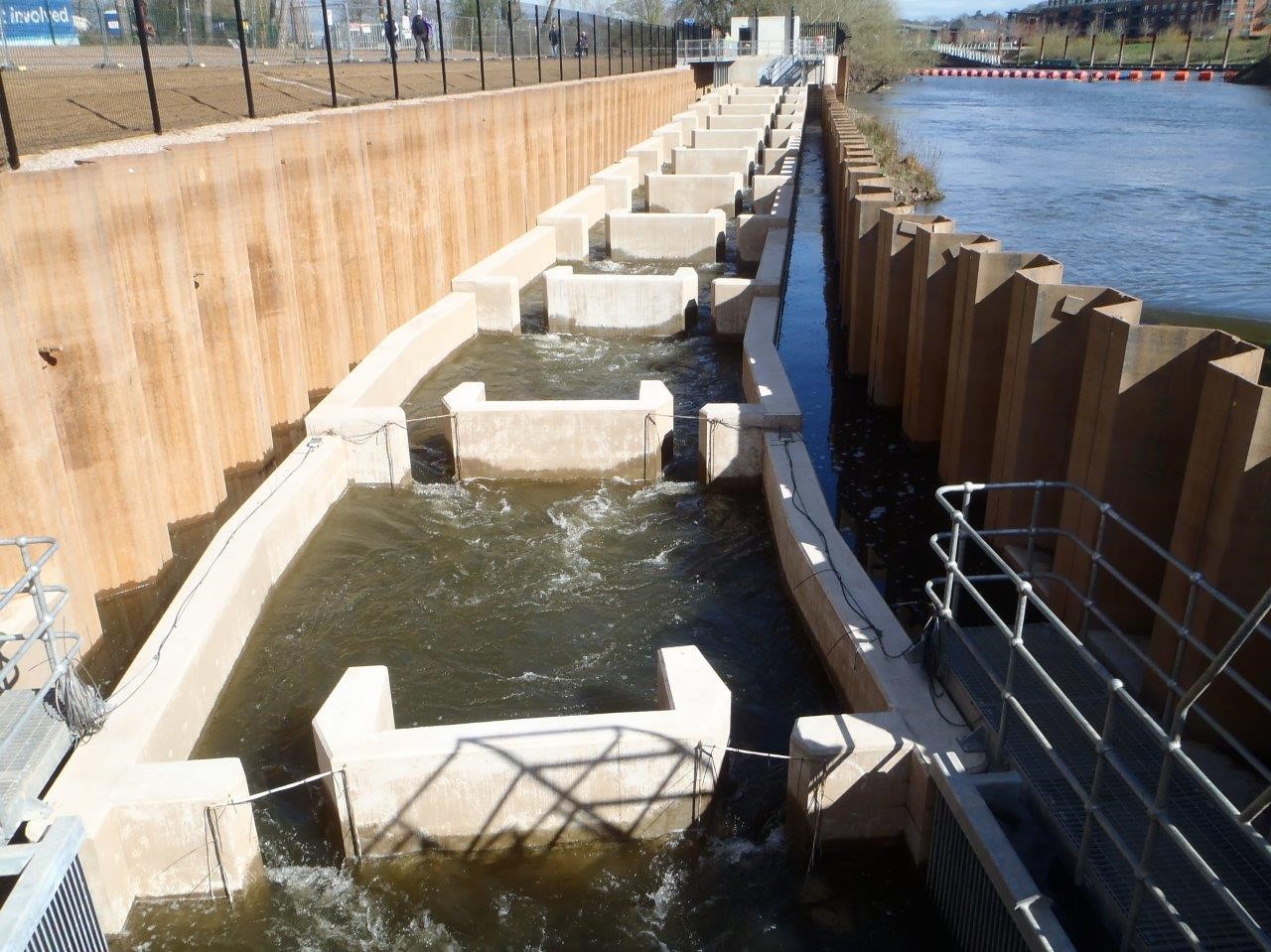
Source: Environment Agency
Where can I find out more about the project?
We will be providing regular updates via this page and our Midlands Twitter account - @EnvAgencyMids
Simon Ward, Fisheries Technical Specialist with the Environment Agency has a blog which he regularly updates, you can find his blog here
You can also contact us via EMDenquiries@environment-agency.gov.uk
Please contact us if you have any questions
You can find further information, or answers to any specific queries, by contacting EMDenquiries@environment-agency.gov.uk
Audiences
- Recreational and commercial river users
- Fishing clubs and representative associations
- Members of the public with an interest in the river, the species and conservation
- Members of the public
- Elected representatives, including MPs
Interests
- Habitats and wildlife
- Specific projects, issues, or activity pages

Share
Share on Twitter Share on Facebook